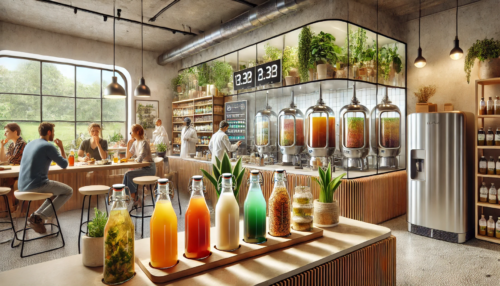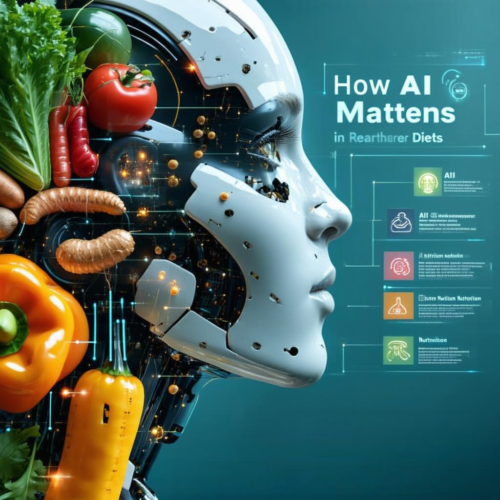“Zero-Waste Restaurants: The Eco-Friendly Revolution Redefining Dining in 2025”
In 2025, sustainability is no longer a buzzword—it’s a necessity. With climate change and resource scarcity looming larger than ever, the restaurant industry is stepping up. Zero-waste restaurants are leading the charge, redefining dining by eliminating food waste through innovative technology, creative practices, and supportive policies. These establishments are not just about serving meals but also about serving the planet.
Imagine a restaurant where every ingredient finds a purpose, leftovers are creatively repurposed, and the concept of waste is obsolete. Let’s explore how zero-waste restaurants are reshaping the way we dine and think about food.
What Are Zero-Waste Restaurants?
Zero-waste restaurants operate with the goal of sending no waste to landfills. They achieve this by rethinking every step of their processes—from sourcing ingredients to handling leftovers. The mantra is simple: reuse, recycle, and compost.
Core Practices:
- Full Ingredient Utilization: Transforming what would traditionally be scraps (e.g., vegetable peels or bones) into soups, sauces, or stocks.
- Composting: Organic waste is composted to enrich soil, reducing landfill dependency.
- Tech-Driven Solutions: Restaurants use AI tools to track inventory and minimize over-purchasing.
- Plastic-Free Operations: Single-use plastics are replaced with biodegradable or reusable alternatives.
The Rise of Zero-Waste Dining
The Problem of Food Waste
According to the U.S. Food and Drug Administration (FDA), 30-40% of the U.S. food supply is wasted annually, equating to billions of pounds of food. This waste contributes to methane emissions from landfills, exacerbating climate change. Recognizing this crisis, initiatives like the FDA’s National Strategy to Reduce Food Loss and Waste have been launched, aiming to tackle the issue at its root.
A New Wave of Restaurants
Leading the charge are establishments like:
- Nolla (Helsinki): A pioneer in zero-waste dining, operating without trash bins and repurposing every scrap.
- Rogue Tomate (New York): This restaurant partners with farms to turn food waste into compost.
- Silo (London): The world’s first zero-waste restaurant, known for its closed-loop system that eliminates waste entirely.
The Role of Technology in Zero-Waste Practices
AI and Predictive Tools
Technology has become a vital ally in reducing food waste. AI-powered platforms such as Winnow and MarketMan help restaurants:
- Track inventory in real-time.
- Predict customer demand to reduce over-ordering.
- Analyze waste patterns to optimize menu design.
Upcycling Innovations
Upcycling is the art of turning byproducts into value-added products. Some examples include:
- Coffee Grounds to Desserts: Coffee grounds are being used to make cookies and cakes.
- Brewing Beer from Bread: Leftover bread is turned into craft beer.
- Citrus Peels for Seasoning: Dried and ground peels add zest to new dishes.
The FDA’s Role in Reducing Food Waste
The FDA has issued practical guidelines to help restaurants and consumers minimize food loss:
- Understand Food Labels: Misunderstanding expiration dates leads to unnecessary disposal. The FDA recommends clearer labeling to distinguish “best by” from “use by.”
- Encourage Safe Donations: The Good Samaritan Food Donation Act protects businesses donating excess food from liability, encouraging waste reduction.
- Promote Composting: Restaurants are encouraged to implement composting programs for organic waste.
- Implement Smart Inventory Practices: Proper inventory management prevents over-purchasing, a leading cause of waste.
Learn more about these guidelines on the FDA’s Food Waste Reduction Page.
Policies Driving the Movement
Global and Local Initiatives
- UN Sustainable Development Goals: Aim to halve global food waste by 2030.
- State Incentives: Many U.S. states offer tax breaks to businesses that donate food or adopt sustainable practices.
Corporate Responsibility
Big brands are joining the zero-waste movement. Companies like Starbucks and McDonald’s are testing strategies to reduce waste in their supply chains, influencing smaller players to follow suit.
Why Diners Love Zero-Waste Restaurants
Zero-waste dining offers more than sustainability—it delivers a unique and memorable experience.
The Appeal:
- Creative Menus: Using “waste” ingredients inspires chefs to create innovative dishes.
- Eco-Conscious Choices: Customers feel good knowing their meal supports sustainability.
- Learning Opportunities: Many restaurants educate diners about their practices, fostering a deeper connection to food.
Challenges Facing Zero-Waste Restaurants
Costs and Logistics
Setting up a zero-waste operation requires investment in technology, training, and partnerships. However, long-term savings from reduced waste often offset initial expenses.
Consumer Perception
Not all diners are immediately comfortable with dishes made from upcycled ingredients. Transparency and storytelling are essential to build trust.
FAQs: Understanding Zero-Waste Restaurants
1. What is a zero-waste restaurant?
It’s a restaurant that aims to eliminate all waste by repurposing food scraps, composting organic materials, and using sustainable practices.
2. Do zero-waste restaurants save money?
Yes, many save money by reducing over-purchasing, repurposing ingredients, and cutting waste disposal costs.
3. Can leftovers be donated?
Yes, thanks to the Good Samaritan Food Donation Act, restaurants can safely donate surplus food without legal risks.
4. Are these restaurants more expensive for diners?
Not necessarily. While some zero-waste restaurants may charge a premium for their innovative practices, many are competitively priced.
5. How can I support zero-waste dining?
Choose to dine at zero-waste restaurants, spread awareness, and reduce waste in your own kitchen.
The Future of Zero-Waste Dining
The zero-waste movement is gaining momentum, but its potential is far from fully realized. By 2030, advances in technology and broader adoption of sustainable policies could make zero-waste practices the industry standard.
Expect more restaurants to embrace circular economies, where every resource is reused. With increased awareness and support, zero-waste dining has the power to inspire change beyond the restaurant industry, fostering sustainability in homes, businesses, and communities worldwide.
Additional Resources
For more information, check out these resources:
- FDA Guidelines on Reducing Food Waste
- RTS: Food Waste in America
- MarketMan’s Zero-Waste Guide
- Zero Waste USA
Conclusion: Dining with Purpose
Zero-waste restaurants are more than a trend—they’re a solution. They prove that sustainability can coexist with profitability, creativity, and culinary excellence. As more diners and businesses embrace the zero-waste philosophy, the future of food looks brighter, greener, and more responsible.
The next time you go out to eat, consider choosing a zero-waste restaurant. It’s a small step that contributes to a big impact—a planet with less waste and more care.




